- Home
- Clive Cussler
Serpent Page 4
Serpent Read online
Page 4
The doctor jabbed a hypodermic needle into the woman's arm. “Morphine for the pain,” he explained. He tried to hide the worry in his eyes. “We've got to get her off the ship as soon as possible.”
They wrapped the unconscious woman in a blanket and carried her up, to the promenade deck on the lower side. The fog had miraculously disappeared, and a small flotilla surrounded the ship, blazing lights reflected in the sea. Coast Guard helicopters hovered above like dragonflies. A steady stream of lifeboats plodded back and forth between the stricken liner and rescue ships.
Most of the lifeboat traffic was between the Doria and a huge passenger ship with the words Ile de France on its bow. Searchlights from the Ile were trained on the Doria. Word to abandon ship had never come down. After waiting for two hours, passengers simply went over the side on their own. Women and children and older people were being taken off first. Progress was slow because the only. way they could get off the boat was with ropes and nets.
Mrs. Carey was strapped onto a stretcher that was carefully lowered with lines down the side of the ship to a waiting lifeboat, where friendly hands reached up to receive her.
Carey leaned over the rail watching until his wife was safe, then turned to Angelo. '
“Better get your butt off this ship, my friend. She's gonna go down.”
Angelo looked sadly around him. “Pretty soon, Mr. Carey I help a few more passengers first.” Smiling, he said, “Remember what I say about my name.” When Angelo first met the Careys he'd joked that his name meant “angel,” someone who serves others.
“I remember.” Carey enveloped the waiter's hand in his. “Thanks. I can never repay you. If you ever need anything, I want you to come to me. Understand?”
Angelo nodded “Grazie. I understand. Please say goodbye to the beta signora. ”
Carey nodded, heaved himself over the side, and slid down a rope into the lifeboat. Angelo waved goodbye. He hadn't told Carey or anybody about the wild scene in the garage. This wasn't the time. There might never be a right time. Nobody would believe a fantastic story told by. a lowly waiter: He remembered a Sicilian saying: The bird who sings in the tree ends up in tie cooking pot. .
The death watch was almost over.
The last survivors had been taken off the ship in the pinkish
light of dawn. The captain and a standby crew stayed on the ship until the last minute to keep the liner from being claimed as salvage. Now they, too, slid down ropes into lifeboats.
As the warm morning sun climbed into a cloudless sky, the ship's list became ever sharper. By 9:50 A.M. she lay on her starboard side at a fortyfivedegree angle. The bow was partially submerged.
The Stockholm hove to about three miles away, her prow a twisted mass of metal. Debris littered the oily water. Two destroyer escorts and four Coast Guard cutters stood by Planes and helicopters circled overhead.
The end came around ten o'clock. Eleven hours after the collision, the Doria rolled completely onto her right side. The empty lifeboats that had defied all the crew's efforts to launch them floated away on their free of their davits at last. Foamy geysers exploded around the perimeter of the ship as air trapped in the hull blew out under pressure through the portholes.
Sunlight glinted on the huge rudder and the wet blades of the twin nineteenfoot propellers that had sent her steaming proudly across the ocean. Within minutes water engulfed the bow, the stern lifted at a steep angle, and the ship slid beneath the sea as if she'd been sucked under by the powerful tentacles of a gigantic sea monster.
As she sank, more seawater rushed into the hull and. filled compartments and staterooms. The pressure tearing apart metal and rivets produced that spooky, almost human moaning that used to send chills up the spines of submariners who had just sunk a ship.
The ship plunged toward the bottom in almost the same angle and position at which she sank. Two hundred twentyfive feet below, she came to a jarring stop, then settled levelly onto her sandy bier on her starboard side. Bubbles seething from hundreds of openings transformed the normally dark water around the wreck to a light blue.
Rubbish whirled around a tremendous vortex for at least fifteenteen minutes. As the water returned to normal, a Coast Guard boat moved in and dropped a marker buoy where the ship had been.
Gone from the world's sight was the twomilliondollar cargo of wines, fine fabrics, furniture, and olive oil.
Gone, too, was the incredible artworkthe murals and tapestries, the bronze statue of the old admiral.
And locked deep in the ship's interior was the black armored truck with the bulletriddled bodies and the deadly secret they had died for.
The tall blond man came .down the gangplank of the Ile de France onto Pier 84 and made his way to the customs shed. Wearing a black wool sailor's cap and a long overcoat, he was indistinguishable from the hundreds of passengers who swarmed onto the deck .
Discharging its humanitarian duty had put the French liner thirtysix hours behind schedule. It arrived in New York on Thursday afternoon to a tumultuous welcome, stayed long enough to unload seven hundred thirtythree Doria survivors. After accomplishing its historic rescue, the ship did a quick turnaround, steamed back up the Hudson River and out to sea. Time was money, after all.
' “Next,” the customs officer said as he looked up from his table.
The officer wondered for a second if the man in front of him had been injured in the collision and decided the scar had healed long ago. ,
“State Department's waiving passports for survivors. Just sign this blank declaration card. All I need is your name and U.S. address,” the customs inspector said.
“Yes, thank you. They told us on the ship.” The blond man smiled. Or maybe it was just the scar. “I'm afraid my passport is at the bottom of the Atlantic Ocean.” He said his name was Johnson and that he was going to Milwaukee.
The officer pointed. “Follow that line, Mr. Johnson. The Public Health Service has got to check you for communicable diseases. Shouldn't take long. Next, please.”
The health inspection was brief, as promised. Moments later the blond man was through the gate. The crowd of survivors, relatives, and friends had surged from the steamship dock onto the street. There was a traffic jam of slowmoving, hornhonking trafficcars, buses, and taxis. He stopped at the curb and scanned the faces around him until a pair of eyes met his. Then two more and another. He nodded to acknowledge that he had seen his comrades, before they headed off' in different directions:
He moved away from the crowd, toward Fortyfourth Street and flagged down a taxi. He was weary from the night's exertions and looked forward to the chance to rest.
Their work was done. For now.
June 10, 2000
The Moroccan Coast
Serpent
1
NINA KIROV STOOD AT THE TOP OF the ancient stairway, eyes sweeping the nearly stagnant green waters of the lagoon, thinking she had never seen a coast more barren than this isolated stretch of Moroccan shoreline. Nothing stirred in the oppressive, ovenlike heat. The only sign of human settlement was the duster of puttycolored, barrelroofed tombs that overlooked the lagoon like seaside condominiums for the departed. Centuries of sand drifting through the arched portals had mingled with the dust of the dead. Nina grinned with the delight of a child seeing presents under the Christmas tree. To a marine archaeologist, these bleak surroundings were more beautiful than the white sands and palm trees of a tropical paradise. The very awfulness of the mournful place would have protected it from her biggest fear: site contamination.
Nina vowed to thank Dr. Knox again for persuading her to join the expedition. She had refused the initial invitation, telling the caller from the University of Pennsylvania's respected anthropology department that it would be a waste of time. Every inch of Moroccan coastline must have been explored with a fine-tooth comb by now. Even if someone did discover an underwater site, it would have been buried under tons of concrete by the Romans, who invented waterfront renewal. As much as Nin
a admired their engineering skills, she considered the Romans Johnny-come-lately spoilers in the grand scheme of history. ,
She knew her refusal had more to do with sour grapes than archaeology. Nina was trying to dig herself out from under a mountain of paperwork generated by a shipwreck project off the coast of Cyprus in waters claimed by the Turks. Preliminary surveys suggested the wreck was of ancient Greek origin, triggering conflicting claims between these old enemies. With national honor at stake, the F16s from Ankara and Athens were warming up their engines when Nina dove on the wreck and identified it as a Syrian merchantman. This brought the Syrians into the mess, but it defused the potential for a bloody encounter. As the owner, president, and sole employee of her marine archaeological consultancy firm, MariTime Research, all the paperwork ended up in Nina's lap.
A few minutes after she told the university she was too busy to accept the invitation, Stanton Knox called.
“My hearing must be going bad, Dr. Kirov,” he said in the dry nasal tones she had heard a hundred times issuing from behind his lectern. “I actually thought I heard someone tell me you were not interested in our Moroccan expedition, and of course that can't be true.”
Months had passed since she had talked to her old mentor. She smiled, picturing the, snowy shock of hair, the near manic gleam behind the wirerimmed spectacles, and the roue's mustache that curled up at the ends over a puckish mouth.
Nina tried to blunt the inevitable charm offensive she knew was coming.
“With all due respect, Professor Knox, I doubt if there's a stretch of the North African coast that hasn't been overbuilt by the Romans or discovered by somebody else.”
“Brava! I'm glad to see that you recall the first three lessons of Archaeology 101, Dr. Kirov.”
Nina chuckled at the ease with which Knox donned his professorial robe. She was in her thirties, owner of a successful consulting business, and held almost as many degrees as Knox did., Yet she still felt like a student within his aura. “How could I ever forget? Skepticism, skepticism, and more skepticism.”
“Correct,” he said with obvious joy. “The three snarling dogs of skepticism who will rip you to pieces unless you present them with a dinner of hard evidence. You'd be surprised at how often my preaching falls on deaf ears.” He sighed theatrically, and his tone became more businesslike. “Well, I understand your concern, Dr. Kirov. Ordinarily I would agree with you about site contamination, but this location is on the Atlantic coast well beyond the Pillars of Melkarth, away from Roman influence.” '
Interesting. Knox used the Phoenician name for the western end of the Mediterranean where Gibraltar bends low to kiss Tangier. The Greeks and Romans called it the Pillars of Herakles. Nina knew from bitter classroom experience that when it came to names, Knox was as precise as a brain surgeon.
“Well, I'm terribly busy”
“Dr. Kirov, I might as well admit it,” Knox interjected. “I need your help. Badly. I'm up to my neck in land archaeologists who are so timid they wear galoshes in the bathtub. We really need to get somebody into the water. It's a small expedition, about a dozen people, and you'd be the only diver.”.
Knox's reputation as a skilled fly fisherman was not undeserved. He dangled the Phoenician connection under her nose; set the hook with his sympathetic appeal for help, then reeled her in with the suggestion that as the only diver she would get sole credit for any underwater finds.
Nina could practically see the professor's pink nose twitching with glee. She shuffled the folders on her desk. "I've got a ton of paperwork to finish . .
Knox cut her off at the pass. “I'm well aware of your Cyprus job;” he said. "Congratulations, by the way, for averting a crisis between NATO partners. I've taken care of everything. I have two highly competent teaching fellows who would love to gain experience in dealing with the red tape that is such a substantial part of archaeology these days. This is a preliminary survey. We'll only be a week or ten days. And by then my trusted young Myrmidons will have .dotted all the I's and crossed all the T's.
You don't have to decide this minute. I'll fax you some material. Take a peek at it and get back to me."
“How long do you need, Dr. Knox?”
An hour would do. Cheerio."
Nina put the phone down and laughed out loud. An hour.
Almost immediately, paper began to spew from the fax machine like lava from an erupting volcano. It was the project proposal Knox submitted with his funding request. He wanted money to survey an area for GrecoRoman or possibly other ruins. The standard Knox sales pitch, a tantalizing mix of facts and possibilities, designed to make his project stand out in bold relief from all the others competing for funds.
Nina breezed through the proposal with a practiced eye and shifted her attention to the map. The survey locus was between the mouth of the Draa River and the western Sahara on the Moroccan coastal plain that stretched from Tangier to Essaouria. Tapping her teeth with the tip of her ballpoint pen, she studied an enlarged section of the area. The coastal indentation looked as if the cartographer had hiccupped while drawing the " shoreline. Noting the site's proximity to the Canary Islands, she leaned back in her chair and thought how she needed to get out into the field before she went insane. She picked up the telephone and dialed.
Knox answered in midring. “We leave next week.”
Now, as Nina surveyed the lagoon, the lines and squiggles on a map translated themselves into physical features. The basin was roughly circular, embraced by two pincers of blasted brick red rock. Beyond the entrance were shallows that at low tide revealed rippling mud flats. Thousands of years ago the lagoon opened directly onto the ocean. Its naturally sheltered waters would have attracted ancient mariners who commonly anchored on either side of a headland to wait for good weather or daylight. Nearby was a dry riverbed, what the locals called a wadi. Another good sign. Settlements often grew near a river.
From the lagoon a narrow, sandy path led through the dunes and eventually terminated at the ruins of a small Greek temple.
The harbor would have been too tight for Roman ships and their massive jetties. She guessed the Greeks used the inlet as a temporary anchorage. The steep shoreline would have discouraged hauling goods inland. She 'had checked the old maps, and this site was miles from any known ancient settlement. Even today, the nearest village, a sleepy Berber encampment, was ten miles away over a rutted sand road.
Nina shielded her eyes from the sun and stared. over the water at a ship anchored offshore. The vessel's hull was painted from waterline to superstructure in turquoise green. She squinted, just making out the letters NUMA, the acronym for the National Underwater and Marine Agency, emblazoned on the hull amidships. She idly wondered what a vessel belonging to a U.S. government agency was doing off a remote shoreline in Morocco. Then she picked up a large mesh bag and descended a dozen worn stone steps to where the water gently lapped the bottom stair.
As she removed her UPenn baseball cap, sunlight glinted off braids the color of ripe wheat woven together behind her head. She slipped out of an oversized Tshirt. The floral bikini she wore underneath revealed a strong, longlegged body nearly six feet tall.
Nina inherited her first name, her golden hair, her slightly roundish face, and a peasant stamina that could put male counterparts to shame from her greatgrandmother, a sturdy farm worker who found true love in a Ukrainian cotton field with a Tsarist soldier. From Nina's Georgian mother came the bold, almost Asian eyes of stormy gray, high haughty cheekbones, and lush mouth. By the time the family emigrated to the United States, the genetic airbrush had slimmed the Kirov female silhouette, narrowing thick waists and .wide hips, leaving a pleasing width and a healthy bustline.
From the bag .Nina took a Nikon digital camera in a custom-built Ikelight plastic housing and checked the strobe light. Next came an air tank and US. Divers buoyancy compensator, a blackandpurple Henderson wetsuit, booties, gloves, hood, weight belt, and mask and snorkel. She suited up and on her head attached a Niteri
der Cyclops light that would keep her hands free, then fastened the quickrelease buckles of her BC and snapped on her weight belt. Finally, she strapped a seven-inch Divex titanium knife to her thigh. After dipping a collection bag to a utility hook, she set. the time on her latest toy, an Aqualand dive watch with a depth display.
With no dive buddy to check her equipment, Nina went through the routine predive inspection twice. Satisfied with the results, she sat on the stair and worked her feet into her fins, then she slipped off the step before the blistering North African sun cooked her inside the wetsuit. The tepid water seeped between her skin and the neoprene wetsuit and quickly warmed to body temperature. She tested her main and extra regulators, then pushed away from the stairs, turned, and slowly breaststroked into the pondlike lagoon.
There was virtually no wave motion, and the slimy water was slightly brackish, but even with the surface scum Nina reveled in her freedom. She glided along with gentle fin flutters, pitying the expedition's land archaeologists as they crawled on sore knees wielding trowels and whisk brooms, eyes stinging with sweat-caked dust. Nina could maneuver in comfortable coolness like a plane making an aerial survey
A lowlying island topped by an anorexic scraggle of stunted pines guarded the entrance. She planned to swim directly toward the island and bisect the lagoon: She would explore each half separately, making a series of parallel runs at. right angles to the baseline. The search pattern was similar to that used to find a wreck in the open ocean. Her eyes would take the place of a sidescan sonar or magnetometer. Precision measurements came later. She simply wanted to get a feel for what lay underwater.
Once below the clouded surface, the water was relatively clear, and Nina could see to the bottom, a depth of no more than twenty feet. This meant she could snorkel and conserve air. A series of intersecting straight lines materialized and formed into rectangles created by carefully fitted stone blocks.
The stairway had continued down underwater to an old quay. It was a significant discovery because it indicated the lagoon was once a real port and not a temporary anchorage. The bottom was likely to be covered with layers of civilization over a long period of time instead of junk tossed over the side by transient sailors.

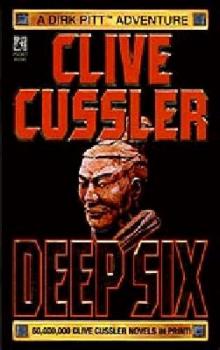 Deep Six
Deep Six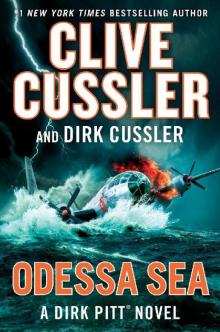 Odessa Sea
Odessa Sea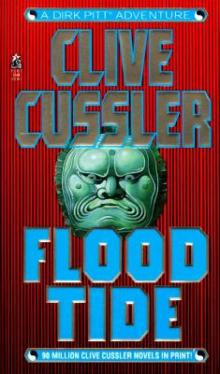 Flood Tide
Flood Tide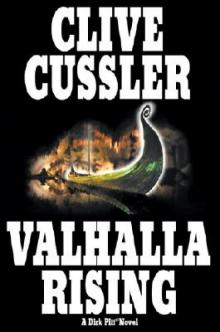 Valhalla Rising
Valhalla Rising Thriller 2
Thriller 2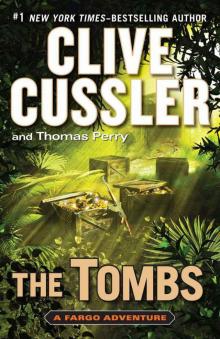 The Tombs
The Tombs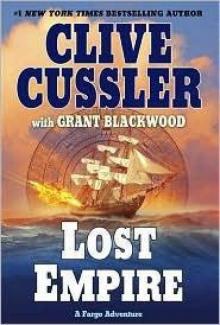 Lost Empire
Lost Empire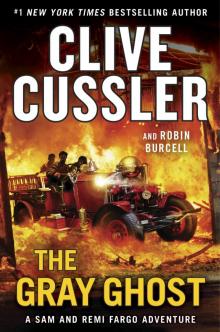 The Gray Ghost
The Gray Ghost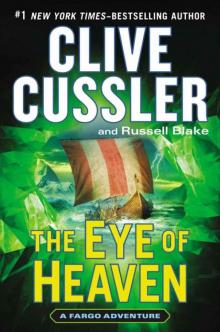 The Eye of Heaven
The Eye of Heaven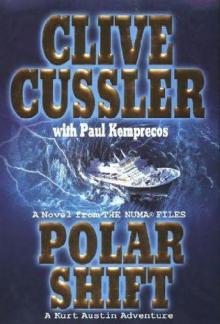 Polar Shift
Polar Shift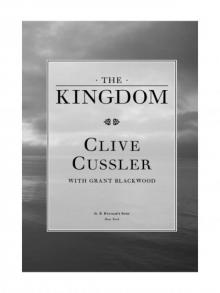 The Kingdom
The Kingdom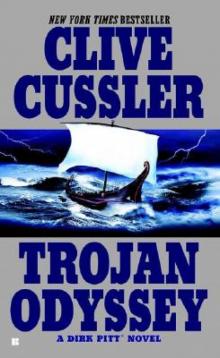 Trojan Odyssey
Trojan Odyssey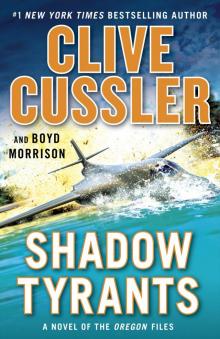 Shadow Tyrants
Shadow Tyrants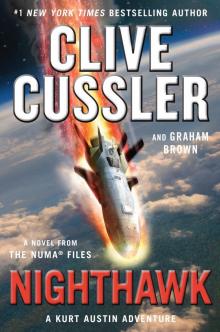 Nighthawk
Nighthawk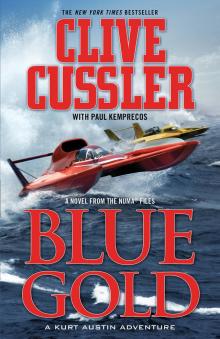 Blue Gold
Blue Gold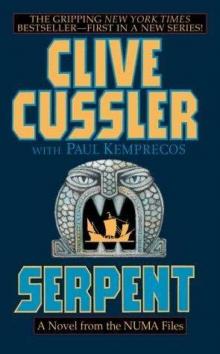 Serpent
Serpent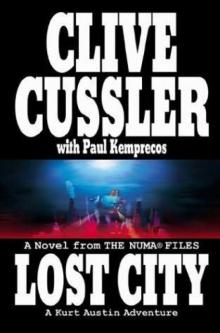 Lost City
Lost City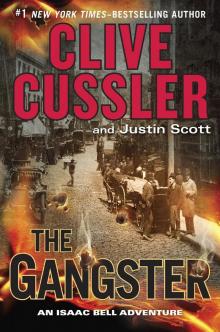 The Gangster
The Gangster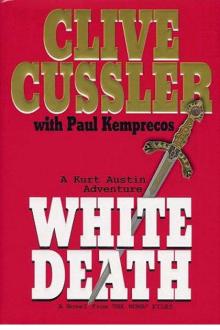 White Death
White Death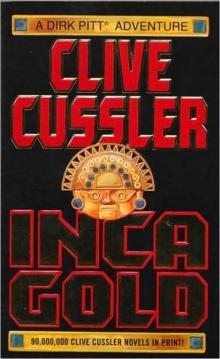 Inca Gold
Inca Gold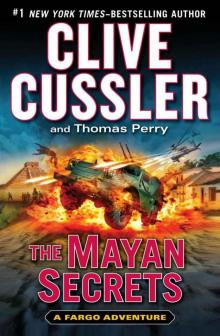 The Mayan Secrets
The Mayan Secrets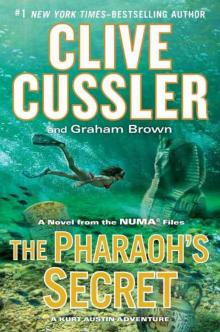 The Pharaoh's Secret
The Pharaoh's Secret The Emperor's Revenge
The Emperor's Revenge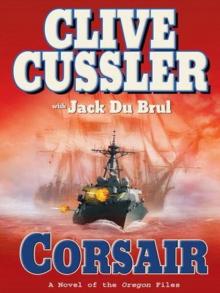 Corsair
Corsair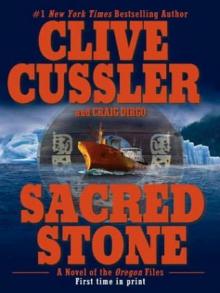 Sacred Stone
Sacred Stone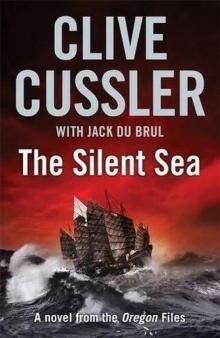 The Silent Sea
The Silent Sea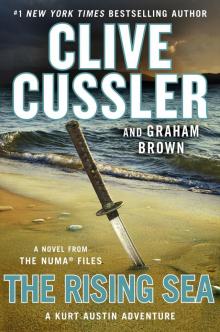 The Rising Sea
The Rising Sea Black Wind
Black Wind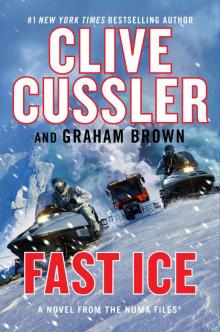 Fast Ice
Fast Ice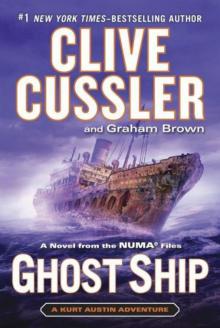 Ghost Ship
Ghost Ship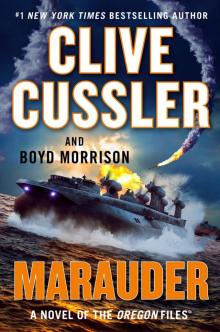 Marauder
Marauder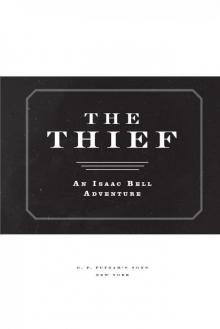 The Thief
The Thief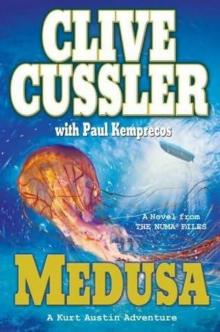 Medusa
Medusa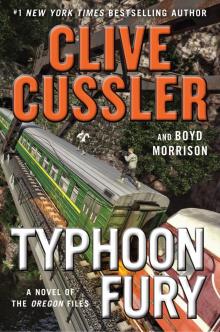 Typhoon Fury
Typhoon Fury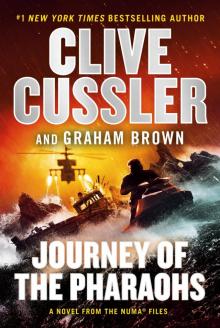 Journey of the Pharaohs
Journey of the Pharaohs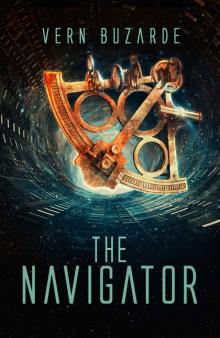 The Navigator
The Navigator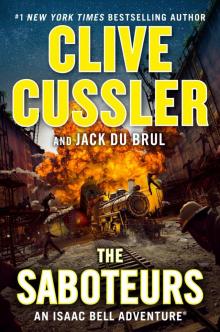 The Saboteurs
The Saboteurs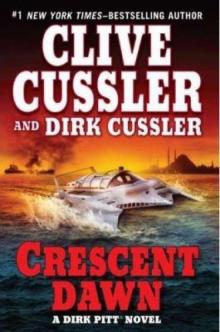 Crescent Dawn
Crescent Dawn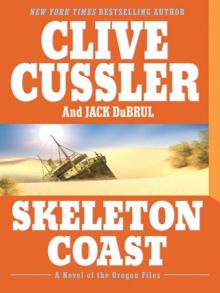 Skeleton Coast
Skeleton Coast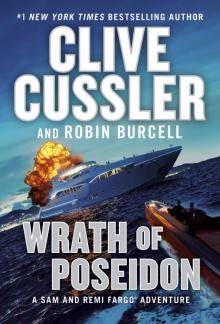 Wrath of Poseidon
Wrath of Poseidon The Mediterranean Caper
The Mediterranean Caper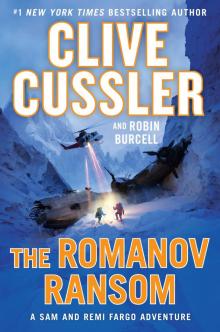 The Romanov Ransom
The Romanov Ransom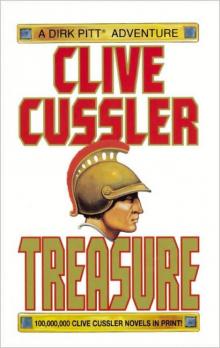 Treasure
Treasure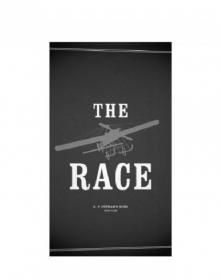 The Race
The Race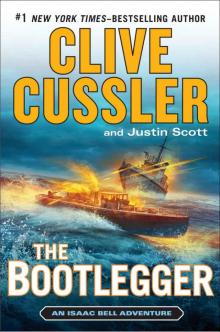 The Bootlegger
The Bootlegger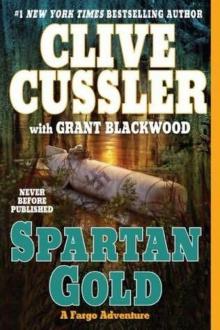 Spartan Gold
Spartan Gold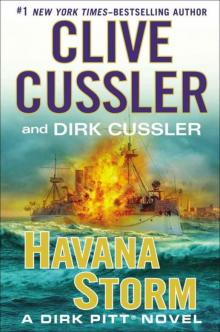 Havana Storm
Havana Storm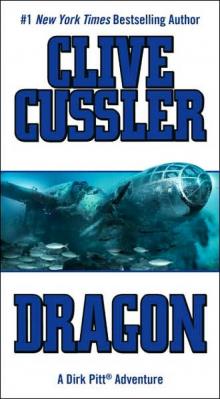 Dragon
Dragon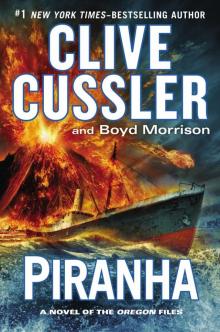 Piranha
Piranha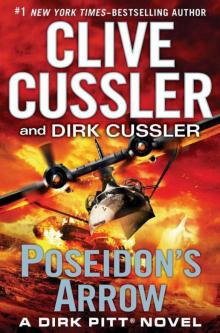 Poseidon's Arrow
Poseidon's Arrow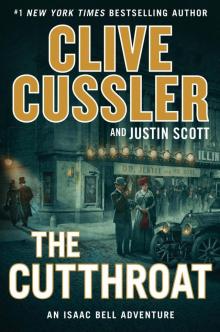 The Cutthroat
The Cutthroat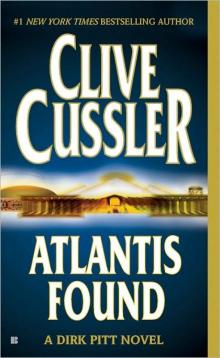 Atlantis Found
Atlantis Found The Jungle
The Jungle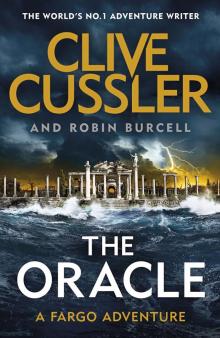 The Oracle
The Oracle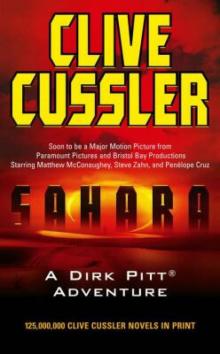 Treasure / Dragon / Sahara: Clive Cussler Gift Set
Treasure / Dragon / Sahara: Clive Cussler Gift Set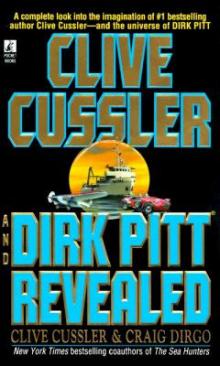 Clive Cussler and Dirk Pitt Revealed
Clive Cussler and Dirk Pitt Revealed The Sea Hunters
The Sea Hunters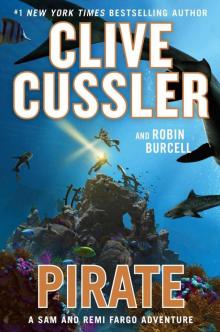 Pirate
Pirate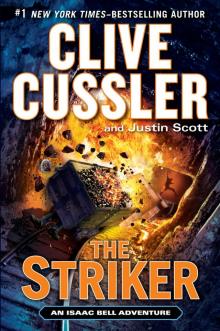 The Striker
The Striker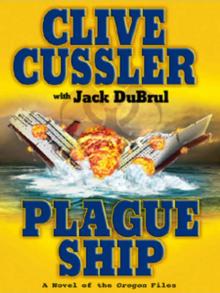 Plague Ship
Plague Ship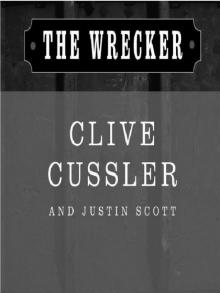 The Wrecker
The Wrecker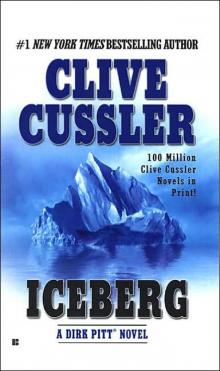 Iceberg
Iceberg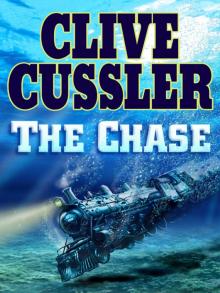 The Chase
The Chase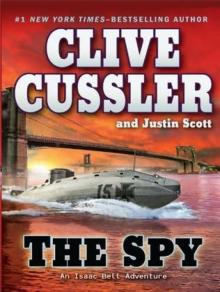 The Spy
The Spy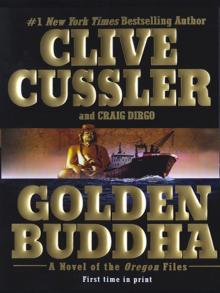 Golden Buddha
Golden Buddha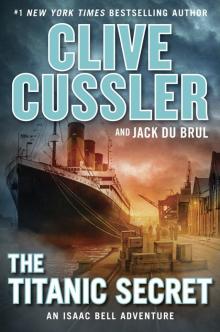 The Titanic Secret
The Titanic Secret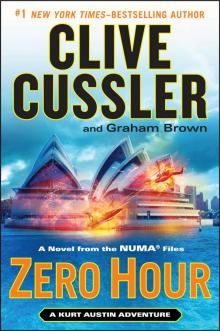 Zero Hour
Zero Hour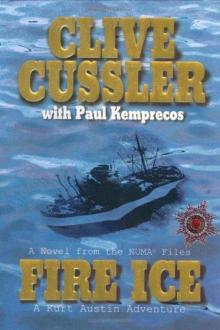 Fire Ice
Fire Ice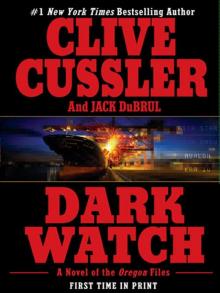 Dark Watch
Dark Watch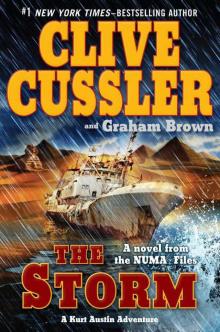 The Storm
The Storm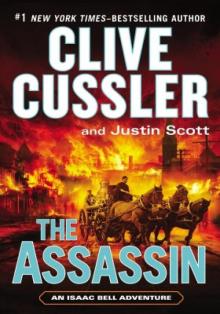 The Assassin
The Assassin Vixen 03
Vixen 03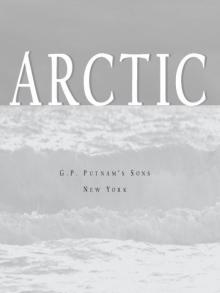 Arctic Drift
Arctic Drift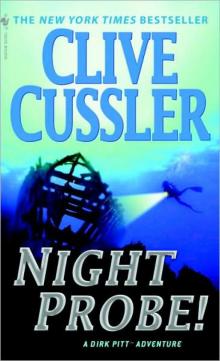 Night Probe!
Night Probe!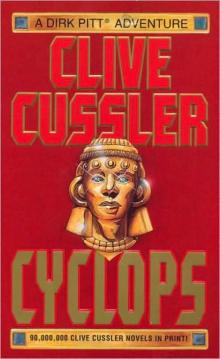 Cyclops
Cyclops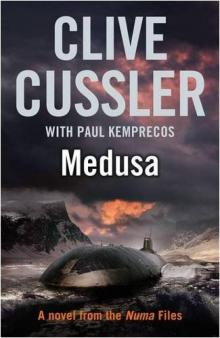 Medusa nf-8
Medusa nf-8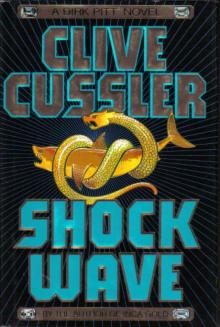 Shock Wave dp-13
Shock Wave dp-13 Marauder (The Oregon Files)
Marauder (The Oregon Files)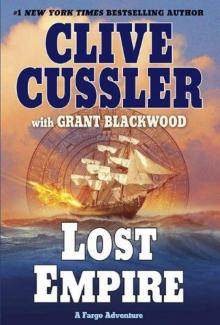 Lost Empire fa-2
Lost Empire fa-2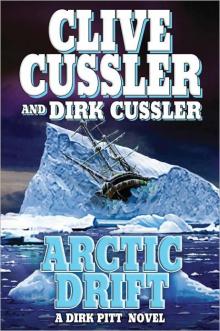 Arctic Drift dp-20
Arctic Drift dp-20 Dirk Pitt 22 - Poseidon's Arrow
Dirk Pitt 22 - Poseidon's Arrow Treasure of Khan dp-19
Treasure of Khan dp-19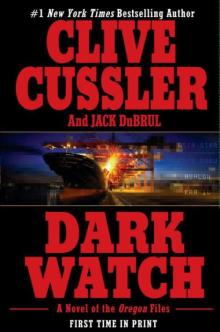 Dark Watch of-3
Dark Watch of-3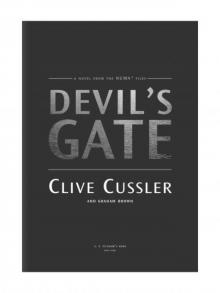 Devil's Gate
Devil's Gate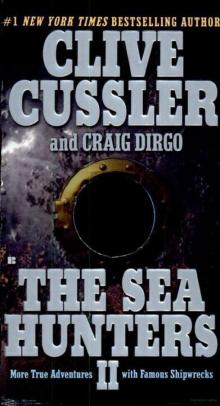 The Sea Hunters II: More True Adventures with Famous Shipwrecks
The Sea Hunters II: More True Adventures with Famous Shipwrecks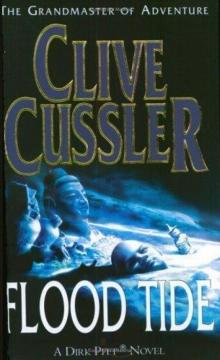 Flood Tide dp-14
Flood Tide dp-14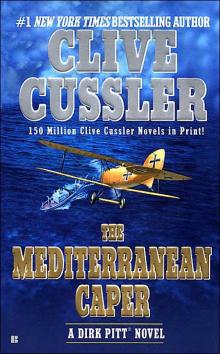 The Mediterranean Caper dp-2
The Mediterranean Caper dp-2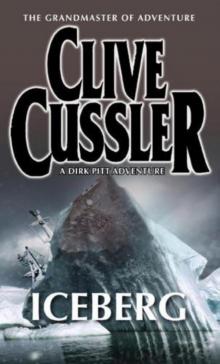 Iceberg dp-3
Iceberg dp-3 Sahara dpa-11
Sahara dpa-11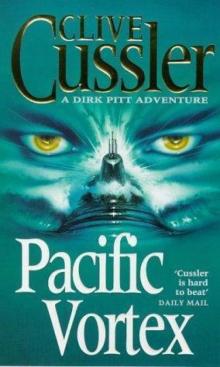 Pacific Vortex! dp-1
Pacific Vortex! dp-1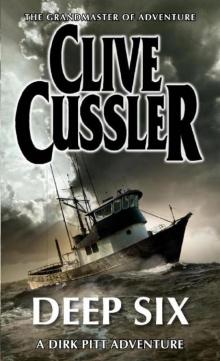 Deep Six dp-7
Deep Six dp-7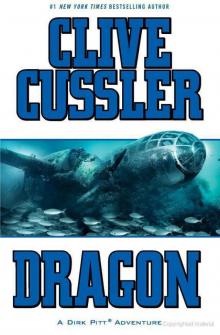 Dragon dp-10
Dragon dp-10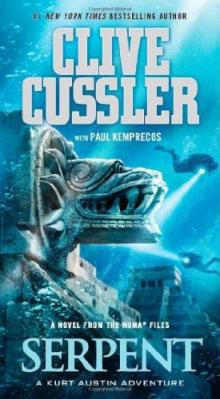 Serpent nf-1
Serpent nf-1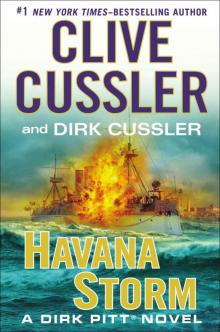 Havana Storm (Dirk Pitt Adventure)
Havana Storm (Dirk Pitt Adventure)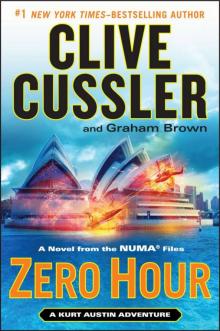 Zero Hour nf-11
Zero Hour nf-11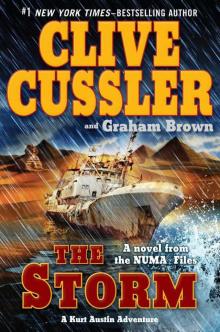 The Storm nf-10
The Storm nf-10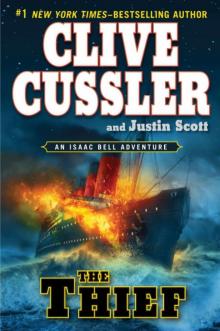 The Thief ib-5
The Thief ib-5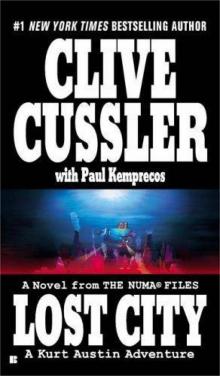 Lost City nf-5
Lost City nf-5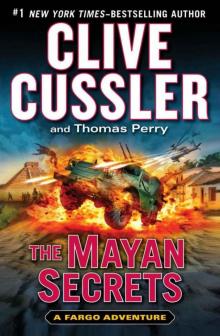 The Mayan Secrets fa-5
The Mayan Secrets fa-5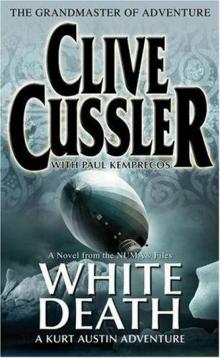 White Death nf-4
White Death nf-4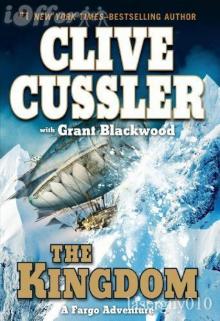 The Kingdom fa-3
The Kingdom fa-3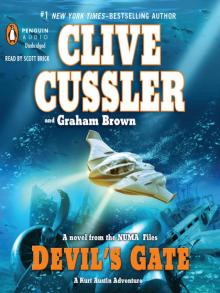 Devil's Gate nf-9
Devil's Gate nf-9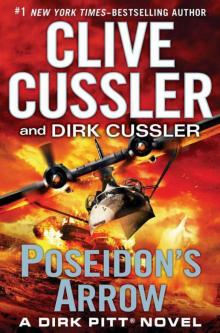 Poseidon's Arrow dp-22
Poseidon's Arrow dp-22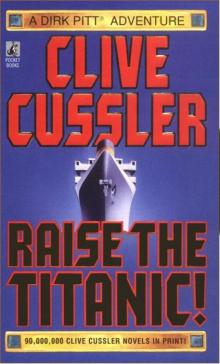 Raise the Titanic dp-4
Raise the Titanic dp-4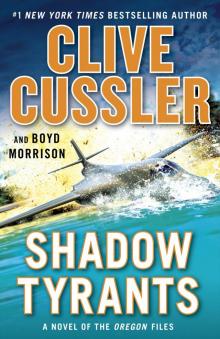 Shadow Tyrants--Clive Cussler
Shadow Tyrants--Clive Cussler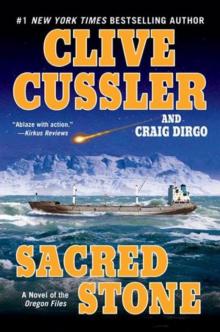 Sacred Stone of-2
Sacred Stone of-2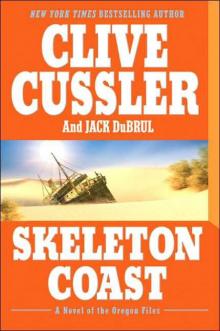 Skeleton Coast tof-4
Skeleton Coast tof-4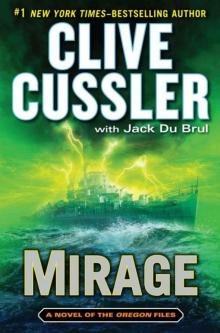 Mirage tof-9
Mirage tof-9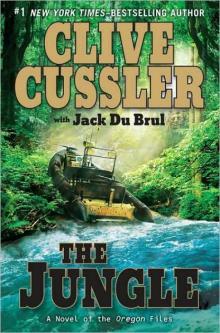 The Jungle of-8
The Jungle of-8 The Emperor's Revenge (The Oregon Files)
The Emperor's Revenge (The Oregon Files)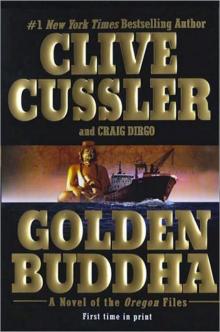 Golden Buddha of-1
Golden Buddha of-1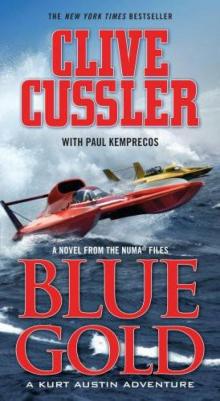 Blue & Gold
Blue & Gold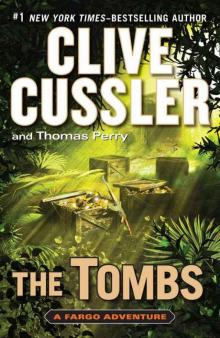 The Tombs fa-4
The Tombs fa-4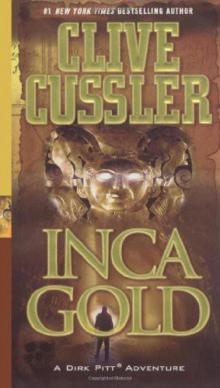 Inca Gold dp-12
Inca Gold dp-12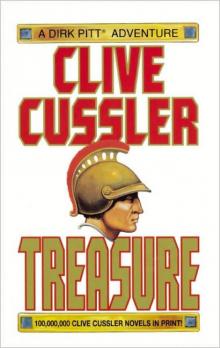 Treasure dp-9
Treasure dp-9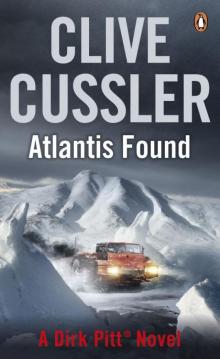 Atlantis Found dp-15
Atlantis Found dp-15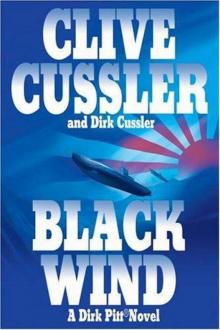 Black Wind dp-18
Black Wind dp-18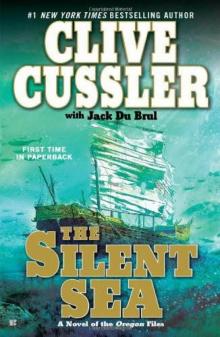 the Silent Sea (2010) tof-7
the Silent Sea (2010) tof-7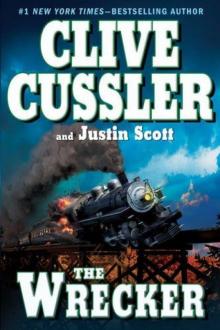 The Wrecker ib-2
The Wrecker ib-2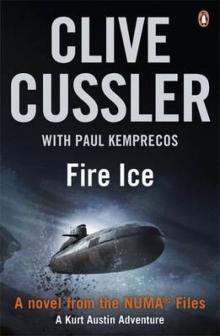 Fire Ice nf-3
Fire Ice nf-3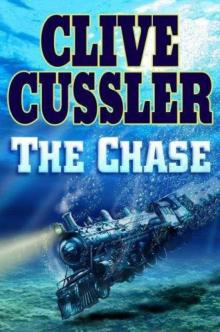 The Chase ib-1
The Chase ib-1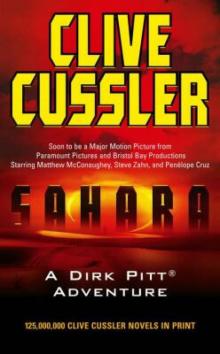 Sahara
Sahara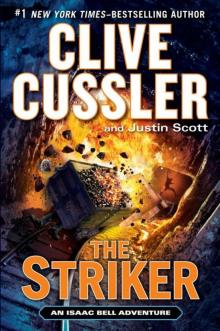 The Striker ib-6
The Striker ib-6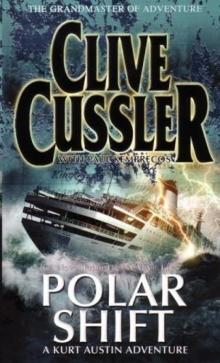 Polar Shift nf-6
Polar Shift nf-6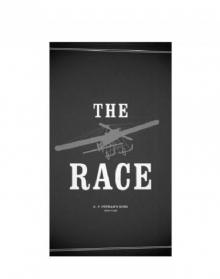 The Race ib-4
The Race ib-4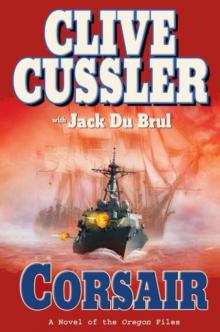 Corsair of-6
Corsair of-6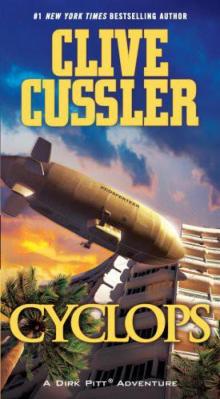 Cyclops dp-8
Cyclops dp-8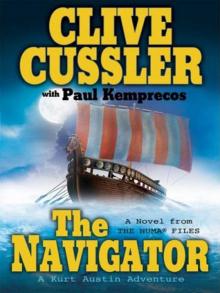 The Navigator nf-7
The Navigator nf-7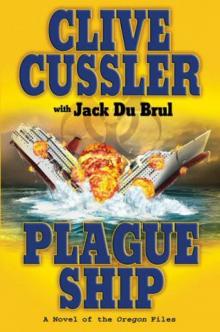 Plague Ship tof-5
Plague Ship tof-5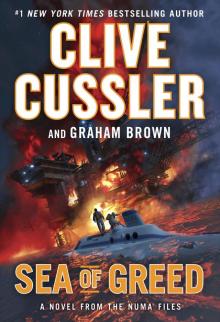 Sea of Greed
Sea of Greed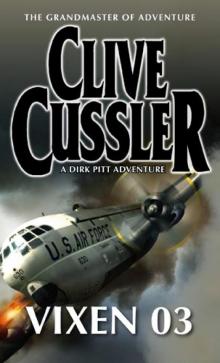 Vixen 03 dp-5
Vixen 03 dp-5 Thriller 2: Stories You Just Can't Put Down
Thriller 2: Stories You Just Can't Put Down